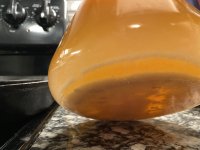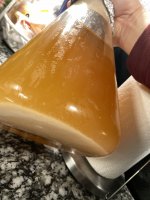- Joined
- Jan 4, 2015
- Messages
- 112
- Reaction score
- 73
I recently cultivated yeast from 3 cans of a Belgium Style Golden Ale from Currahee Brewery. Here is a link to the beer Frankenstark – Currahee Brewing
I started with a 400mL yeast starter, then stepped it up to 2L starter. It was happy and active, lots of activity. I attached some picture after cold crashing. The yeast cake just seems grainy and thin. Versus what I typically see when making yeast started with liquid yeast.
Any concerns here ?
I started with a 400mL yeast starter, then stepped it up to 2L starter. It was happy and active, lots of activity. I attached some picture after cold crashing. The yeast cake just seems grainy and thin. Versus what I typically see when making yeast started with liquid yeast.
Any concerns here ?
Attachments
Last edited:










































![Craft A Brew - Safale BE-256 Yeast - Fermentis - Belgian Ale Dry Yeast - For Belgian & Strong Ales - Ingredients for Home Brewing - Beer Making Supplies - [3 Pack]](https://m.media-amazon.com/images/I/51bcKEwQmWL._SL500_.jpg)






